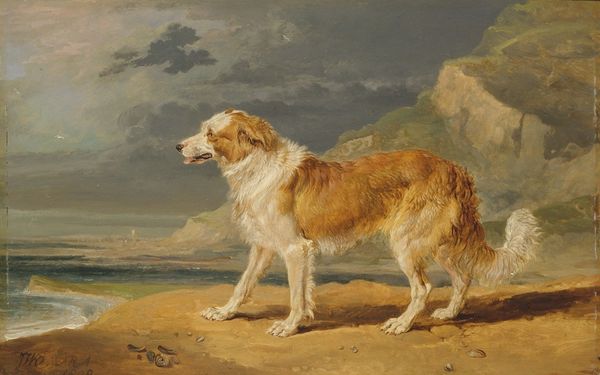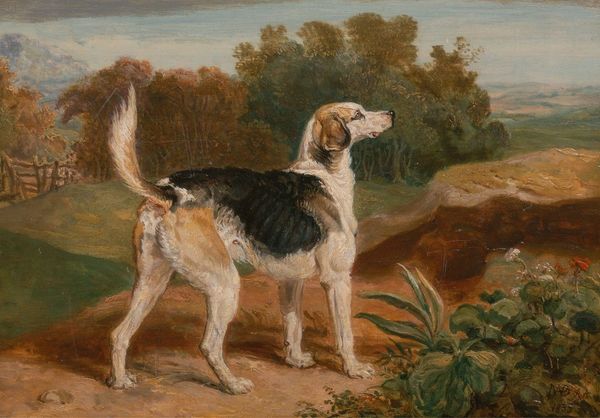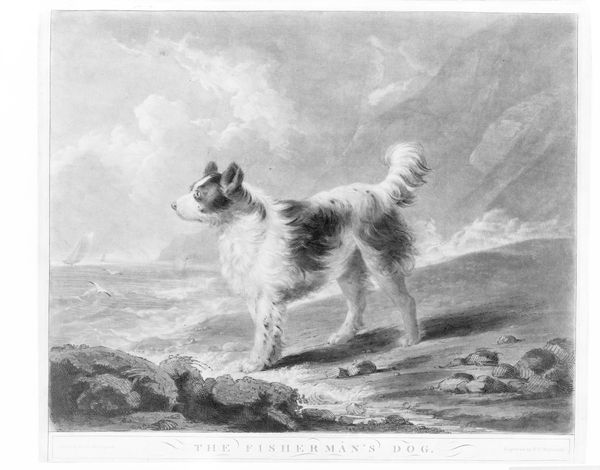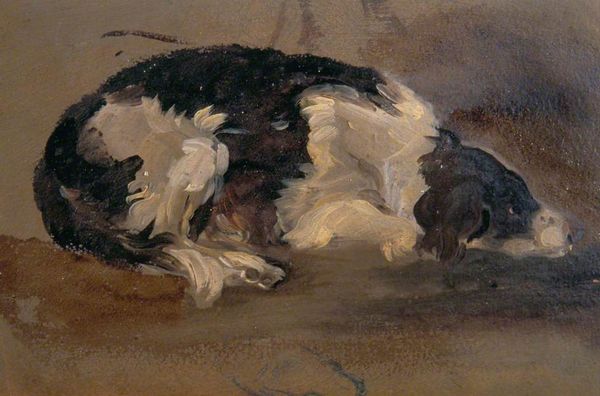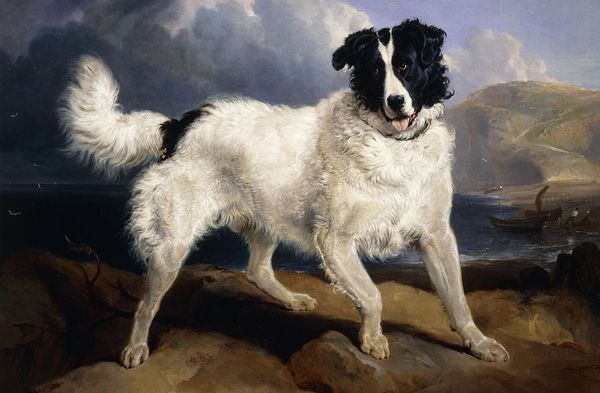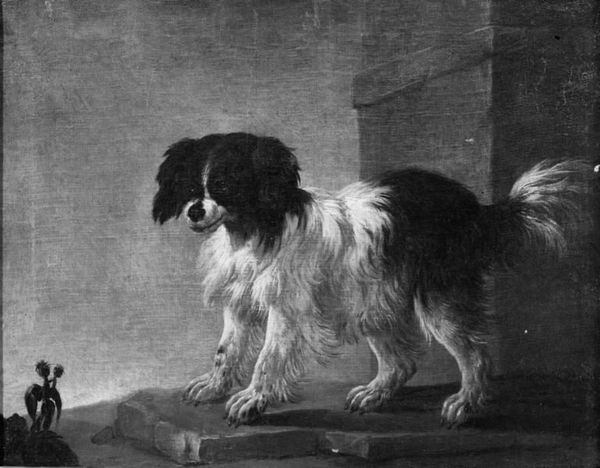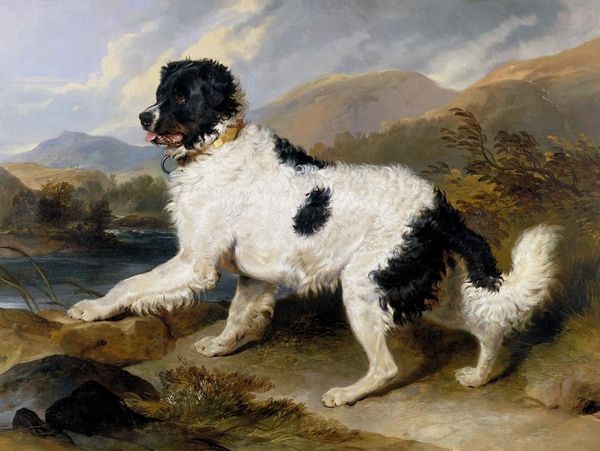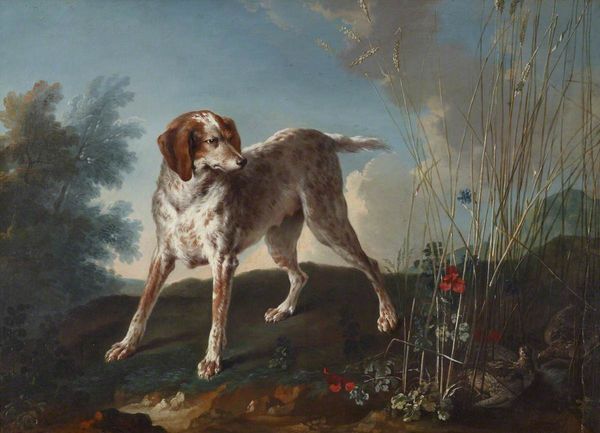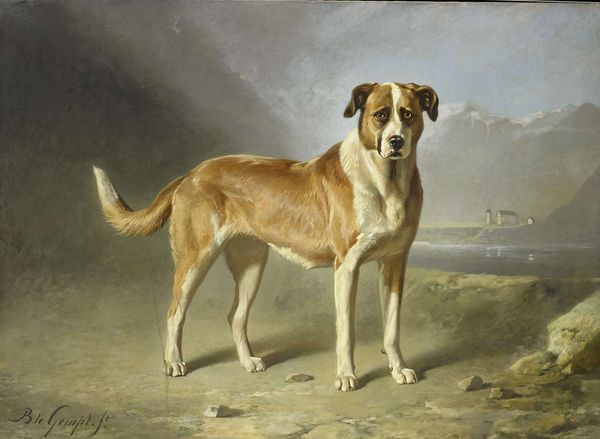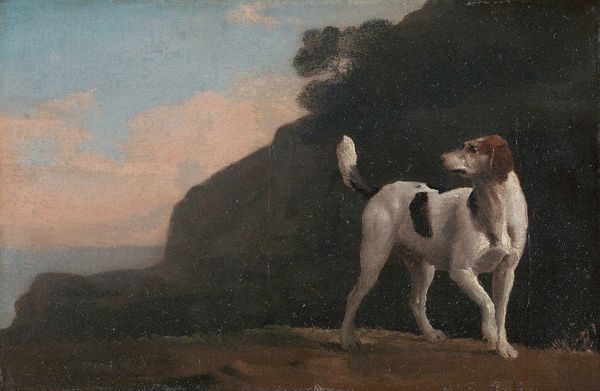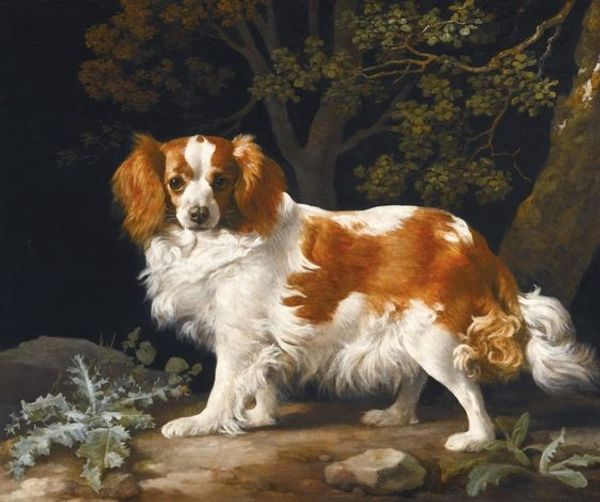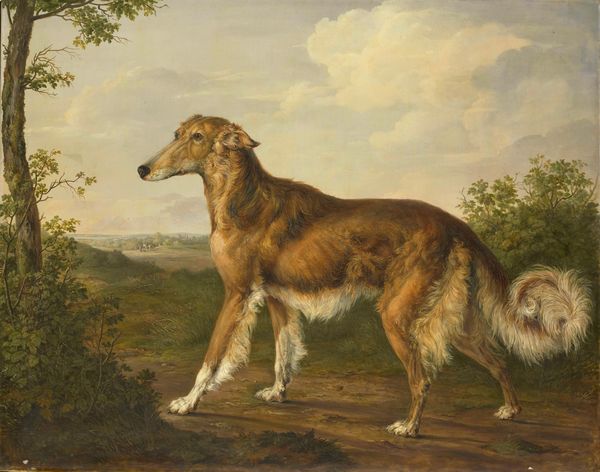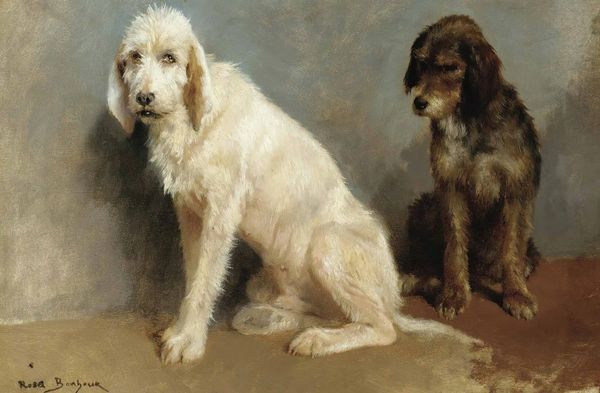
painting, oil-paint
#
portrait
#
painting
#
oil-paint
#
landscape
#
oil painting
#
romanticism
#
animal portrait
#
painting painterly
#
genre-painting
Copyright: Public domain
Curator: What a compelling study! Something about it evokes both calm and foreboding in me. Editor: It does, and the drama! I find this oil painting by George Morland really quite interesting. It's entitled "Friend," and we're presented with a scene of a dog on what looks like a rugged shoreline. Curator: "Friend," is it? Note the artist’s name signature in the corner: these signs are as much branding exercises as identifiers. We have to see such signatures in relation to systems of patronage and burgeoning art markets during Morland's time. How did these practices and modes of creation contribute to his fame and standing? Editor: Precisely. Morland had an interesting and complicated reputation, to put it mildly! While hugely popular, particularly for his rustic scenes and animal paintings, he struggled financially. One can look at it in terms of the influence of the Royal Academy at the time, and its gatekeeping effect. Genre painting like this sat lower in the hierarchy. Curator: Hierarchy! That's interesting here; consider the *application* of oil paint—thick impasto for the craggy cliff, contrasted with delicate, almost feathery strokes for the dog's fur. The production techniques shape how we perceive the different subjects depicted; this also informs value! Is Morland inviting us to challenge established categories of high and low art, just as he himself perhaps challenged social norms through his lifestyle? Editor: That tension definitely pervades the work. Note, too, the way the vast, airy sky presses down – and those few brushstrokes indicating ships, implying trade and larger economic structures shaping this seemingly idyllic scene. Is that a suggestion of colonial power relations creeping into this genre painting, something made and bought to adorn English homes? Curator: I wonder, then, about the networks in which this painting circulated— the dealers, the exhibition spaces, and, crucially, the consumers who gave value to this genre painting of, quite simply, an ordinary animal. It may have become some signifier for national pride… I cannot help but wonder. Editor: The reception of Morland’s work also brings up the politics of art, and whether or not we’re too caught up in a vision of this artwork as a representation of a simple animal, a so-called ‘friend,’ versus considering the much wider impact of image and display at the time. It’s difficult not to, frankly! Curator: Well, either way, what's visible reveals much about those systems supporting their making and circulation. Editor: Ultimately, it seems it asks us to consider our relationship to both the material world and its cultural representation.
Comments
No comments
Be the first to comment and join the conversation on the ultimate creative platform.
